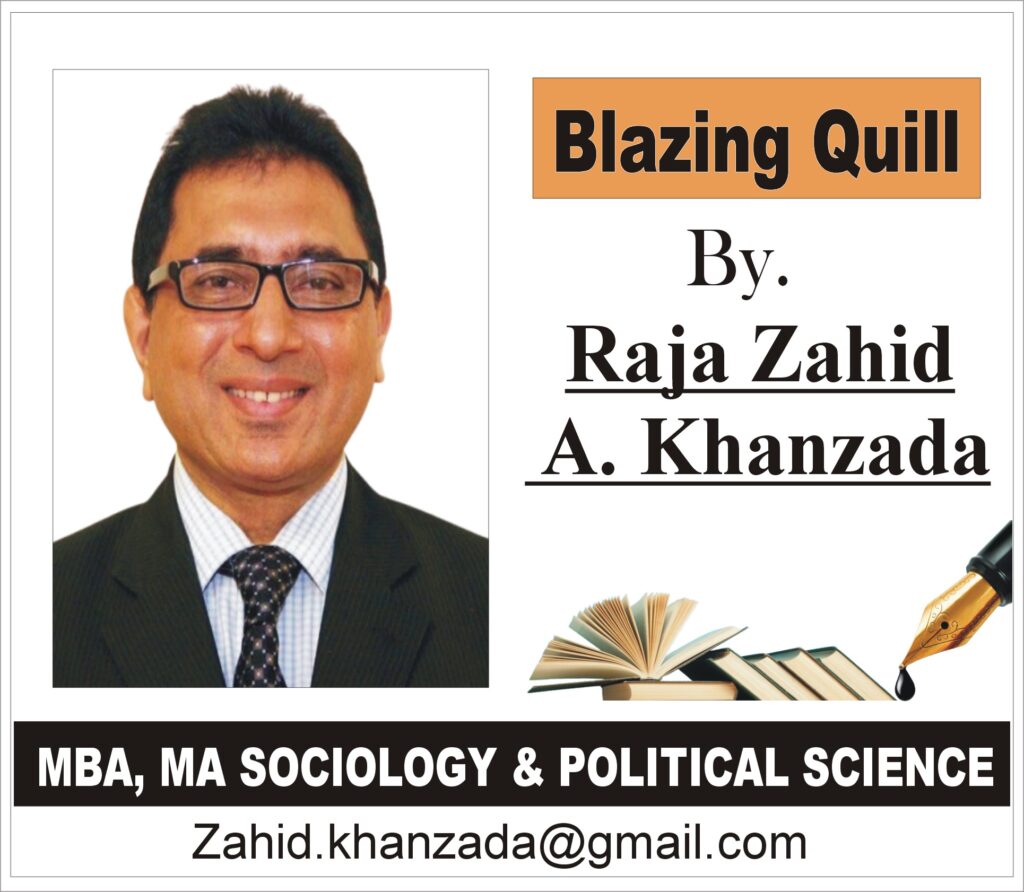Four-Day War: A Military Analysis of India and Pakistan in Light of the Stimson CenterUSA Report
By: Raja Zahid Akhtar Khanzada
Stimson Center, based in Washington, is a reputable research institution on South Asia’s security affairs, which conducts research on topics like international policy, arms control, and nuclear security. Associated with this institution, renowned researcher Christopher Clary, in his latest report “Four Days in May: The India-Pakistan Crisis of 2025,” has presented a detailed analysis of the close war that occurred between India and Pakistan in May 2025.
According to this report, the four-day war of May 2025 fought between India and Pakistan was not merely a border skirmish but became a living example of modern technology, limited time, and intense military confrontation. In the report “Four Days in May” issued by the Stimson Center, Christopher Clary has presented this crisis with deep insight and an impartial analysis. In the light of this report, we can undertake a complete review of this four-day war, which included not only military actions but also diplomatic moves, information warfare, global mediation, and internal weaknesses as important parts of this conflict.
India initiated on May 7. Its attacks were not limited to specific areas but Pakistani targets were hit from Kashmir to Bahawalpur. Advanced cruise missiles like BrahMos and SCALP-EG were used. Indian authorities claimed that these attacks were on “terrorist infrastructure,” but ground evidence does not fully support these claims. These attacks put Pakistan under intense strategic pressure, especially when Indian weapons reached sensitive areas like Chaklala, located very close to Islamabad.
Pakistan responded immediately. On the same day, it claimed to have shot down six Indian fighter jets, which included Rafale and Mirage. In global media reports, the destruction of at least three aircraft was confirmed, which was proof of Pakistan’s defensive capability—particularly the performance of Chinese systems like HQ-9 and PL-15. Pakistan also used ballistic missiles like Fatah-I and Fatah-II and Turkish drones (Yiha-III, Songar) for the first time, but their results remained limited, and most were successfully neutralized by the Indian defense system.
India, from its side, showed more intensity in retaliatory action. During the night of May 9 and 10, India attacked more than 11 Pakistani military installations. These attacks targeted Pakistani airbases, command centers, and radar systems. The Indian attacks were not only more organized but their effectiveness was also proven by satellite images, debris, and videos. These attacks clearly showed that India had gained superiority in air and technology by the final phase of the war.
The ground front of the war remained relatively limited. There was intense shelling on the Line of Control; both sides used artillery, mortars, and tanks, but no territory was conquered, and no border changed. Both countries tried to keep the fight under control so that the conflict would not escalate into a full-scale war. However, most human losses occurred on this front, and Pakistani villages suffered more damage.
Electronic warfare and information war were also significant parts of this clash. Although the report does not mention direct cyberattacks, the use of tactics like “Electromagnetic Environment” and “signal jamming” indicates that both countries actively used digital technology. India tried to paralyze the Pakistani defense system through Harop and other Israeli technology, which achieved partial success.
During this whole conflict, false or exaggerated claims also came from both sides. Pakistan said that Indian missiles fell in Amritsar, but no evidence was found. India declared all Pakistani attacks failed, but news of partial damage on some targets did emerge. Pakistani media also claimed that India’s S-400 system was destroyed, which was without any evidence. Both countries tried to create an impression of internal victory in their information war, but global media considered Pakistan’s narrative less credible and India’s stance relatively cautious.
The technology used in this entire conflict reflected both countries’ military preferences and foreign alignments. Pakistan relied on Chinese-supplied J-10 fighters, PL-15 missiles, HQ-9 defense systems, and Turkish drones. India used Russian S-400s, French Rafales, and Israeli weapons like Harop, SCALP-EG, and Rampage. In terms of technological diversity and operational breadth, India held the upper hand.
As far as the global community is concerned, the United States once again played a key role in mediation. Vice President Vance and Secretary Rubio contacted both countries and eventually made the ceasefire possible. China, Saudi Arabia, and Iran also tried mediation, but their role remained secondary. The U.S. exerted more pressure on Pakistan, while India received relatively more diplomatic support. After the war, India’s global standing appeared stronger, while Pakistan had to offer clarifications.
As a result, although Pakistan showed defensive resistance in the early days, inflicted damage on the Indian Air Force, and tested some new weapons, the final and decisive phase of the war went in India’s favor. India not only demonstrated its strike range militarily but also aligned itself with the global community on the diplomatic front. Pakistan defended with limited resources and an imbalanced diplomatic situation, but the global perception and military outcomes acknowledged India’s technological and strategic superiority.
This war was not a complete victory for either side, but it was clearly a prelude to the nature of future wars—where the battlefield is not just the border but includes air, digital domains, and global media as parts of the war. This report by the Stimson Center is not just an analysis of the past, but a prediction of the times to come: that another war in South Asia is only a matter of time and this time, the decision will be made more by wisdom, unity, and truth than by weapons.



